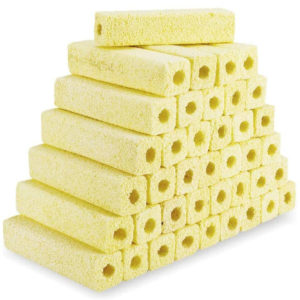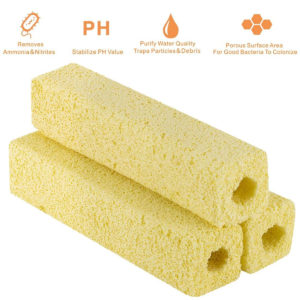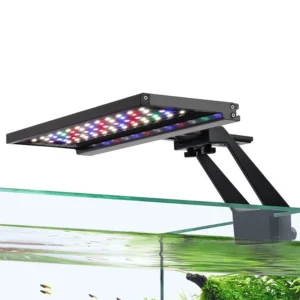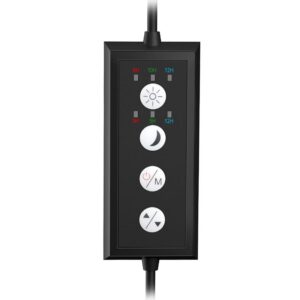The Points of Keeping a Healthy Aquarium
An imbalanced aquarium can be a nightmare. But what does the balance in aquariums mean? Or how to balance fish tank at home? If you are strange with the questions, just read on, you will get more ideas in this article. Now, let’s dive in.
What’s the balance in aquariums
In fact, a balanced aquarium should be a healthy aquarium. Everything in the aquarium remains stable and all pets and plants live peacefully. However, once your aquarium is out of balance, there will be two scenarios – fish take over the aquarium or plants dominate the aquarium. If fish take over the aquarium, they will produce excess waste or toxins, which will limit plant growth or even lead to poor water quality.
On the contrary, in the face of plants dominating the aquarium, they will consume carbon dioxide causing the raise of carbonate compounds. While the nutrients for fish and beneficial bacteria will be greatly diminished. As a result, the aquarium will be trapped and the ecology will be put out of action.
However, if you take no action until your aquarium is trapped in the imbalanced status mentioned above, you will be powerless to save the desperate situation. So, observe and monitor your aquarium regularly. Once you find something abnormal, try to find the root cause, and then make adjustments. For example, if your tank lacks oxygen, fish will gasp for air on the water surface.
How to balance planted aquariums
Get to know the balance in planted aquariums
Before getting into how to balance a planted aquarium, let’s learn what is balance in planted aquariums. Actually, to keep plants healthy and live happily in aquariums, there are three key points, including light, nutrients, and carbon dioxide. And the balance in planted aquariums is to keep peace among the three points.
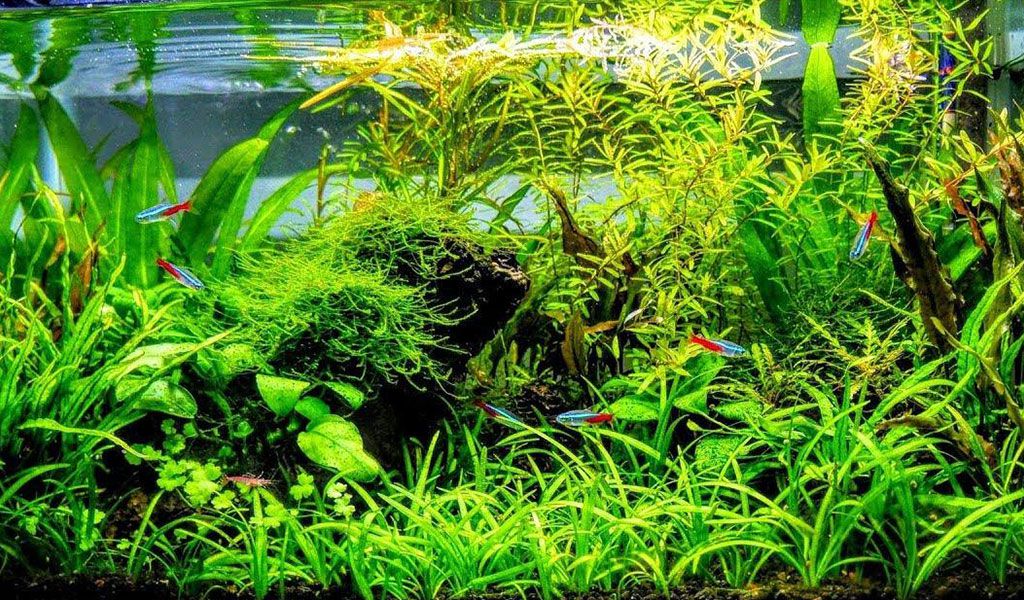
Key points to keep balance in planted aquariums
For keeping a healthy aquarium, we will share how to keep balance in planted aquariums.
Light
Factors, including light intensity, temperature, and carbon dioxide concentration, will affect the rate of photosynthesis. Nonetheless, although there are suitable levels of temperature and carbon dioxide, photosynthesis still can not be fast because of light intensity deficiency.
As for planted tanks, higher light intensity brings more light to the leaves. When you adjust the light intensity from dim to intense, the rate of photosynthesis will get improved, since more light is available to push the photosynthesis. Nevertheless, the rate of photosynthesis will keep stagnant once the light intensity gets optimal. The number of chlorophyll molecules will limit the rate. The light begins to damage your plants at an extremely high light intensity, then the rate will relatively drop. Moreover, intense light will lead to the thriving of algae, which will limit the growth of aquatic plants. If the plants are covered with algae, they are unable to photosynthesize and will stop growing.
On the contrary, facing unreasonable low light, plants are usually eager to gain more light by growing taller or changing the morphology of leaves. However, if so, some plants may not show their original bright colors.
Definitely, everything has two sides. It is necessary to keep suitable and stable light for various plants. But how to set the light? You can set the light according to the tank size and types of plants. The table below gives you some ideas.
| Types of aquatic plants | Lighting hours | Light intensity | Light intensity |
| Low light plants (e.g. Moss, Java fern, Anubias) |
8-10 hours | 10-20 lumens/liter | 15-30 PAR (10-50 μmol/s) |
| Medium-light plants (e.g. Red flame sword, Micro sword, Pearl weed) |
10 hours | 20-40 lumens/liter | 30-80 PAR (50-120 μmol/s) |
| High light plants (e.g. Red or colored aquatic plants) |
10-12 hours | More than 40 lumens/liter | More than 80 PAR (120-200 μmol/s, or higher) |
If you want to learn more about light settings for planted aquariums, you can go to:
Nutrients
Generally, the nutrients consist of macronutrients and micronutrients. Nitrogen, potassium, and phosphorus can be macronutrients. While micronutrients include calcium, iron, magnesium, etc. You can add fertilizer tablets or liquid fertilizers regularly to avoid nutrient deficiency.
Here are some symptoms of nutrient deficiency in aquatic live plants.
| Types of nutrient deficiency | Symptoms of aquatic live plants |
| Nitrogen deficiency | Yellow or translucent leaves & Stunted growth |
| Potassium deficiency | Yellow margins or distinct pinholes on leaves & Shrink leaves |
| Phosphorus deficiency | Leaves close to the base of the stem turn brown or red |
| Phosphate deficiency | Yellow leaves with brown patches |
| Calcium deficiency | Twisted growth & Malformed leaves |
| Magnesium deficiency | Magnesium deficiency |
| Iron deficiency | Yellow leaves with dark veins |
However, sometimes you still can not determine the nutrient deficiency types according to the symptoms of plants mentioned above. In this case, you can ask for a water test kit for help. Then you can find the root cause.
Then, how to keep sufficient and balanced nutrients for plants? Commonly, you should know the nutrient requirements of your plants. Also, you’d better not keep fast-growing and slow-growing plants in one tank. Because fast-growing plants will consume more nutrients, leading to the risk of nutrient deficiency for slow-growing plants. Furthermore, do not add too much fertilizer. Otherwise, algae will thrive in your tank.
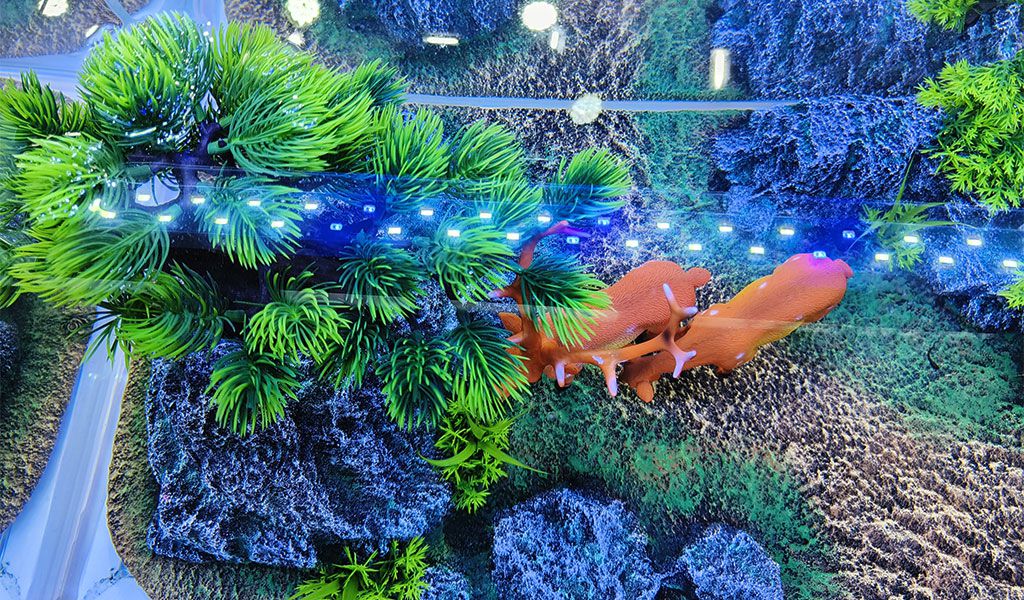
Carbon dioxide
In addition to great living conditions and necessary nutrients, adding carbon dioxide sometimes can be crucial. Commonly, plants will consume carbon dioxide during the photosynthesis process. Hence, in aquariums with fast-growing plants, carbon dioxide injection may be vital. However, as the carbon dioxide level increases, the oxygen level will relatively decrease. In this case, you should make sure of great water surface agitation and gas exchange. Otherwise, your fish may face oxygen deficiency and hard breathing, which would lead to suffocation.
How do keep the fish tank balanced?
Then, how to balance fish tank?
Light
Fish need light to determine the time (day or night), as well as find food and interact with their partners. Also, light helps enhance fish’s color and provides a more natural habitat for fish. Different fish species possess diverse light requirements. Some fish prefer bright light, and others are fond of dim light. Given below are some references.
- Photophobic fish: Glass catfish, Notopterus chitala, Black ghost fish, Aba knifefish
- Highlight fish: Red swordtail, Molly fish, Tiger barb, Harlequin rasbora
- Dim light fish: Tetras or Angelfish native to jungles or wetlands
- Nocturnal fish: Corydoras, Amur catfish, Loaches
But in general, you should keep your aquarium light on for about 8-10 hours each day. If fish do not receive sufficient light, they will face poor metabolism, stunted growth, lethargy, and loss of color.
For more about light settings in fish tanks, you can read:
Filtration
Building a great filtration system can be the key point. As a waste, fish feces, uneaten food, decaying plants’ leaves, or other unnecessary debris build-up, your aquarium will be trapped in poor water quality. A great filtration system helps to filter unnecessary debris and convert harmful substances into harmless ones. Besides that, the filter media provide places for nitrifying bacteria to grow.
Water temperature
Most fish require a constant water temperature. Sudden changes in water temp will threaten their survival. In this case, you’d better research the ideal range of water temperature for your fish. Then you can determine whether to add an aquarium heater or not.
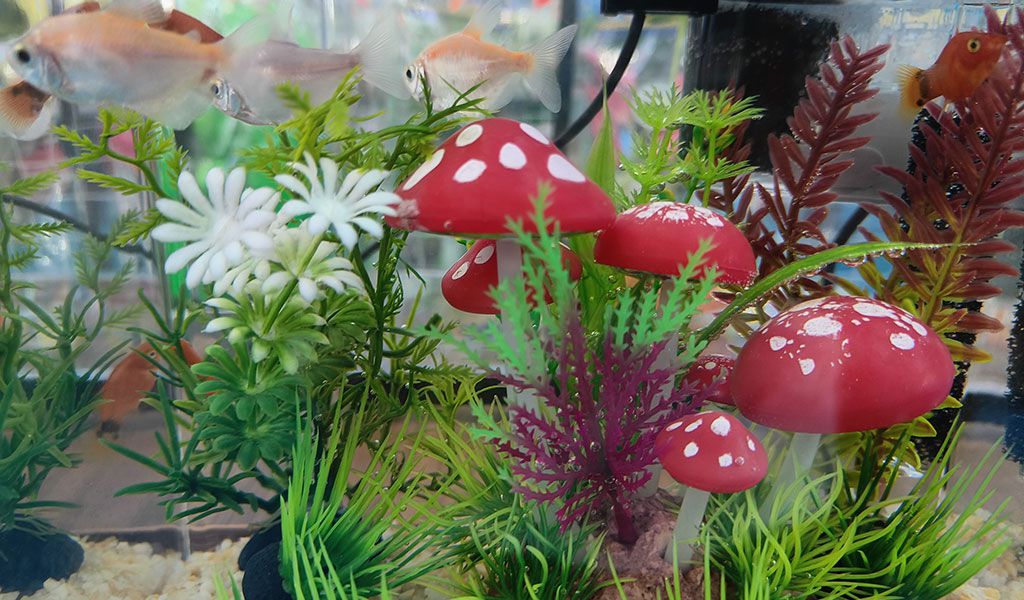
Maintain pH balance in a tank
In addition to the ways to keep balance in planted or fish tanks, this segment will share something about how to keep the water parameters balanced. For example, pH, ammonia, nitrite, nitrate, phosphate, silicate, chlorine, water hardness, etc. Let’s have a look at some of them.
pH level
The pH fluctuation may result in fish death. So keep in mind – check the pH level regularly. Actually, you can control the pH level in many ways. For instance, control pH naturally. It is a long-term remedy and is less harmful to fish. Just add something that can slowly release acid or alkaline elements, like Indian almond leaves, wood, and coral sand. While some can also make your tank more aesthetic.
Ammonia, nitrite, nitrate level
As nitrifying bacteria break down the waste, the ammonia level will correspondingly improve in your tank. Also, ammonia, nitrite, and nitrate formations are parts of the nitrogen cycle. But once the nitrogen cycle is finished in a new tank, the ammonia and nitrite levels should be maintained at zero. Furthermore, though nitrate is less harmful, excessive nitrate is damaging to fish. Consequently, in the face of high levels of ammonia or nitrite, growing nitrifying bacteria or changing water can be excellent choices. Plus, you can know more about ammonia control in What to do if Ammonia is High in Fish Tanks.
Phosphate level
Phosphate formation can be the result of the mineralization of waste, like fish feces, uneaten food, rotted plants, etc. Facing an imbalanced phosphate level, it is feasible to clean your tank and rinse the aquarium supplies, such as aquarium substrate, decors, and filter media.
How long does it take to balance a fish tank?
In general, it takes 6-7 weeks to balance a fish tank. It takes time to grow beneficial bacteria and finish the tank cycle. Take new aquariums as an example, you’d better finish the nitrogen cycle first. Then you can gradually introduce fish. Without the nitrogen cycle, New Tank Syndrome, ammonia stress, or nitrite poisoning will appear.
Reminder
Aside from the methods to keep aquariums balanced mentioned above, daily and proper tank maintenance is significantly critical. For example, regular water changes, water testing, water temp monitoring, cleaning, etc.
That’s it. Thanks for taking the time. Hope you will have an enjoyable aquarium experience.

